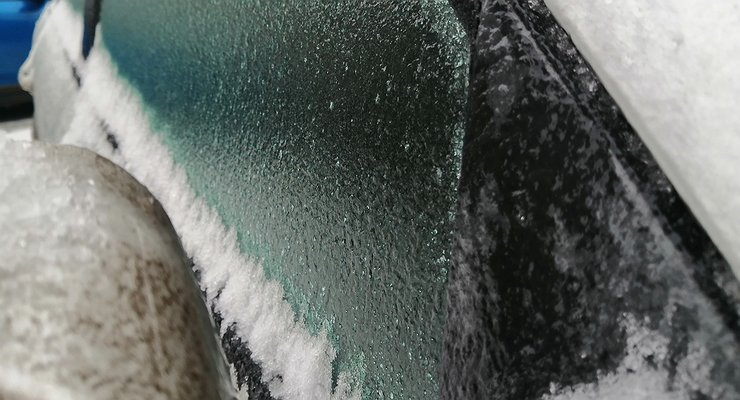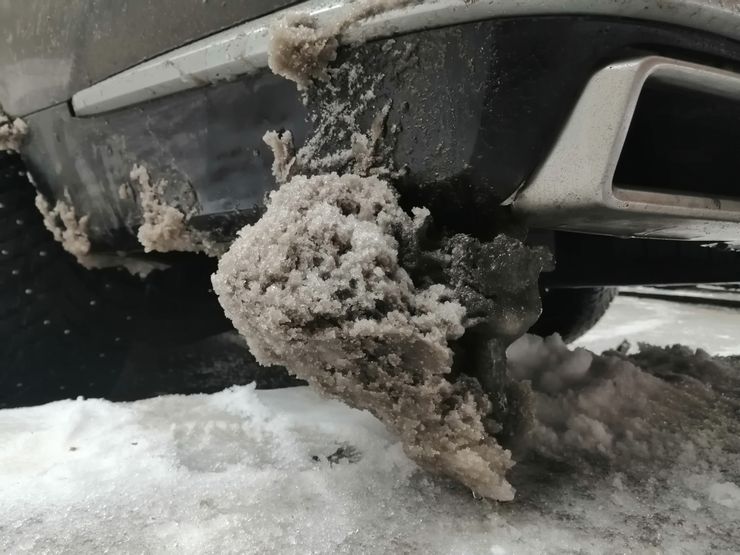Winter weather in the European part of Russia sometimes brings “surprises” that lead to the suffering of millions of car owners. The AvtoVzglyad portal introduces a life hack that can become a real lifesaver both after a powerful thaw and when a sudden rain falls.
In winter, anything can happen to the climate in Russia. Mild weather is replaced by arctic frost for several hours. Large snowdrifts, left behind by a record snowfall, suddenly find themselves under a warm downpour that doesn’t stop for days. Much has been said on the Internet about “icing rain”, its consequences and the fight against icicles that sealed car doors. Therefore, once again we will not “ruminate” this “song”. But with really large-scale thaws, followed by a sharp cooling, there are sometimes no less unpleasant “ice” incidents. We are talking about ice, in which the car can grow wheels.
This happens when a rather deep puddle freezes, if a short-sighted car owner parks his vehicle in it. Or sometimes a heavy snowfall falls asleep parked cars up to the wheel hubs. Then it gives way to heavy rain, which thoroughly soaks the snowdrifts. And then it all freezes – thanks to the returned frost. As a result, the tires and wheels are in a reliable ice tray and it is not possible to get out yourself. And you can not hope for the help of a tractor machine. In such circumstances, the towbar of the passenger car will detach from the ice layer faster than its wheels.
Despite all the hopelessness of the situation, few car owners will agree to wait for the next thaw to leave. It is necessary to somehow save the tires from the trap here and now. We will have to exert physical force on the ice. But the fists will not help here, and few motorists have normal janitor scrap lying around in the car. But it is quite likely that a huge “mountain” will be found in the trunk of an experienced driver. Even if he has never been on board with his own hands and does not intend to do so in the future.
It is with this mount that you need to gently tap the wheels – rubber, of course, without touching the discs. Ideally, the ice should only remain directly in the contact patch of the tire with the asphalt, where there is no way for the tool to creep. And here chemistry will help us: in the form of a stored packet of salt. We pour it around the wheels and push the “white powder” under the tires with a container. And after a while, the salt will act, partially “melting” the ice between the tire and the asphalt. After that, most likely, the car’s engine will already have enough power to move the vehicle from its place.
In winter, anything can happen to the climate in Russia. Mild weather is replaced by arctic frost for several hours. Large snowdrifts, left behind by a record snowfall, suddenly find themselves under a warm downpour that doesn’t stop for days. Much has been said on the Internet about “icing rain”, its consequences and the fight against icicles that sealed car doors. Therefore, once again we will not “ruminate” this “song”. But with really large-scale thaws, followed by a sharp cooling, there are sometimes no less unpleasant “ice” incidents. We are talking about ice, in which the car can grow wheels.
This happens when a rather deep puddle freezes, if a short-sighted car owner parks his vehicle in it. Or sometimes a heavy snowfall falls asleep parked cars up to the wheel hubs. Then it gives way to heavy rain, which thoroughly soaks the snowdrifts. And then it all freezes – thanks to the returned frost. As a result, the tires and wheels are in a reliable ice tray and it is not possible to get out yourself. And you can not hope for the help of a tractor machine. In such circumstances, the towbar of the passenger car will detach from the ice layer faster than its wheels.
Despite all the hopelessness of the situation, few car owners will agree to wait for the next thaw to leave. It is necessary to somehow save the tires from the trap here and now. We will have to exert physical force on the ice. But the fists will not help here, and few motorists have normal janitor scrap lying around in the car. But it is quite likely that a huge “mountain” will be found in the trunk of an experienced driver. Even if he has never been on board with his own hands and does not intend to do so in the future.
It is with this mount that you need to gently tap the wheels – rubber, of course, without touching the discs. Ideally, the ice should only remain directly in the contact patch of the tire with the asphalt, where there is no way for the tool to creep. And here chemistry will help us: in the form of a stored packet of salt. We pour it around the wheels and push the “white powder” under the tires with a container. And after a while, the salt will act, partially “melting” the ice between the tire and the asphalt. After that, most likely, the car’s engine will already have enough power to move the vehicle from its place.
Source: Avto Vzglyad
Donald Salinas is an experienced automobile journalist and writer for Div Bracket. He brings his readers the latest news and developments from the world of automobiles, offering a unique and knowledgeable perspective on the latest trends and innovations in the automotive industry.














